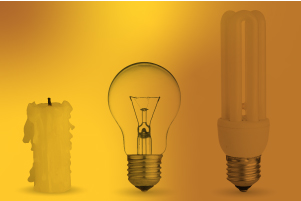Five Technologies Streamlining New Product Development and Contract Manufacturing in 2023
By Adam Kimmel
In a climate of unconstrained innovation and impatience for development timelines, manufacturers constantly search for tools to improve mass production’s quality, speed and economics.
Two processes, new product development (NPD) and design for manufacturing (DFM), are well-positioned to leverage technology advancement for their outputs. These improvements transform how designers and engineers think about how they develop products and how the design can translate to an external manufacturer.
These enhancements are:
- Cloud-Based Design and Analysis
- AI/Machine Learning
- Virtual and Augmented Reality
- Expanded PLM Integration
- Registered Design Tools
All five share common themes: they aid in collaboration between the design team or manufacturing functions to clarify the design intent and provide more accurate inputs to the next process step. This improved collaboration delivers significant innovation coupled with quality, cycle time and cost improvements that business leaders seek.
Cloud-Based Design and Analysis

There are three requirements of these computer-aided functions that limit its speed:
- [Often] expensive software package licenses
- Availability of skilled designers to create and modify the models in the desired software
- Computational capacity to solve CAE analyses consumes substantial bandwidth on the network or local machine
Moving to cloud-based platforms addresses each of these limitations and adds additional measures like boosted security and software management. Furthermore, the cloud offers design collaboration support for CAD models and endless solving capability for CAE. In addition to improving the model and analysis outputs, it frees up your internal team and network to focus on specialized tasks in parallel.
Artificial Intelligence (AI)
Converting a design from a prototype manufacturing process like casting, 3D printing or CNC machining to a high-volume format is not trivial. Software engineers integrate AI into CAD to reduce design iterations and improve dimensional accuracy through suggested design changes.
In addition, AI can assess the CAD model for variances in the design, reducing the number of manual inspection cycles. It is also adept at handling repetitive tasks, such as removing tolerance gaps when prepping a CAD model for finite element CAE analysis.
Virtual and Augmented Reality (VR/AR)
VR and AR are bringing product design to life through improved visualization. One of the most effective design strategies is for the design team to see physical parts firsthand to conceptualize how the product should look and features that improve the initial model.
VR and AR create this benefit and add visualization to develop virtual prototypes so that the designer and engineers experience the part in 3D – albeit virtually. In addition, this approach accelerates and optimizes design loops with the benefit of 3D. Finally, the team can easily share the file with remote or supplier contacts to convey key design features.
Enhanced PLM Integration
Product lifecycle management (PLM) manages a product from concept to disposal at the end of life. As products increase in complexity through digitalization and integrated functions, collaboration between the functional teams is essential. Rather than one lead entity approving the entire complex product, integrated PLM empowers each team member to own their portion in concert with the rest of the team. This shift improves efficiency by letting teams play to their strengths and increases ownership of the product within the group.
PLM can also integrate with contract manufacturing partners, streamlining the design handoff and reducing iterations of design and process questions.
Registered Designs
Like U.S. design patents, EU and UK-registered designs protect a product’s appearance. Therefore, this exercise is an intellectual property (IP) step covering how a product looks along with its design features. In addition to the CAD software mentioned above, several other tools can aid in the design registration process.
These systems include IP management software to follow the IP through the registration process, document management systems, legal services and virtual patent databases. Prior art searches on patent databases inform of the white space for an invention and the freedom to operate (FTO) in a given segment.
Scanners, graphics tablets, digital cameras or design software like Adobe Illustrator capture and communicate the product’s shape to aid in design registration.
Takeaways
These five technologies—cloud-based design and analysis, AI, VR/AR, improved PLM integration and registered design tools—enhance product development and contract manufacturing through increased collaboration. They also provide deeper insights into the design intent and use technological advancement in manufacturing and product development to modify tasks logically. In addition, the partnership leverages the strengths of the team members.
Changing how businesses view product development is critical to realizing the significant advantages improved collaboration through technology can provide. Historically, the process was linear:
Concept -> Drawing -> Model -> Prototype -> Design -> Manufacture
This approach prevented the team from uncovering design or human errors earlier in the manufacturing process, causing highly-disruptive iteration cycles that instantly wrecked the project timeline.
Companies can employ the tools reviewed above for the appropriate tasks with clear deliverables, such as repetitive, non-specialized and well-understood functions. Implementing them can foster innovation while delivering crucial speed and efficiency for both NPD and design for manufacture. Finally, taking tedious tasks off your specialists’ desks can free them up to innovate and execute the next generation of technology.
Adam Kimmel has spent nearly 20 years as a practicing engineer, R&D manager and technical consultant. He has degrees in chemical and mechanical engineering, and is the principal and founder of ASK Consulting Solutions, a technical content writing and strategy firm.












